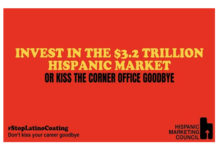Black, Asian, Hispanic and minority ethnic youth suffer higher unemployment rates, compared to other groups on both sides of the Atlantic, according to latest research.
The unemployment rate for the UK’s Black and minority ethnic youth is 50% higher than for young White workers, according to TUC analysis, as reported. A similar picture is being witnessed across the US; with Asian-American youth suffering the highest unemployment rates out of all minority ethnic groups.
At height of the pandemic, US youth unemployment rate was more than double that of the adult population, confirmed Mathematica. Its report carried out with Schultz Family Foundation also reveals that Black, Indigenous and people of colour (BIPOC) youth are facing greater employment inequities than past recessions. Twelve months after the outbreak (March 2021), youth unemployment is at 11%; 3 percentage points higher than it was before the pandemic, and is much higher among Black, Asian and Hispanic youth.
Key findings reveal that overall youth unemployment more than tripled between February and April 2020, jumping from 7.8% to 27.4%; exceeding the rate at the peak of the Great Recession, which was 19.5% in April 2010. Unemployment increases were more pronounced for youth than for adults aged 25 to 54 (around 12.8% in April 2020). This is attributed to youth concentration in retail and hospitality jobs affected by mandates to contain the virus; and the lack of telework option in the sectors where youth are primarily employed. In the second quarter of 2020, job losses in retail (16.8%) and hospitality (45.8%) were among the highest across all industries.
ASIAN-AMERICAN YOUTH HARDEST HIT
Between May and September 2020, youth unemployment for Black male youth, Asian-American male and female youth, and Hispanic male and female youth remained around 20% due to permanent business closures; while unemployment declined among White male youth. Rising unemployment during the early stages of the pandemic was particularly pronounced among female youth and Asian-American youth; groups that have historically had lower than average unemployment rates among young people during typical recessions. Business closures in industries that were hit hardest led to a sharp increase in unemployment, particularly among female youth.
During the first quarter of the pandemic, unemployment among Asian-American male youth jumped from 5.4% to 23.9%; and soared from 7% percent to 25.8% for Asian-American female youth. However, during the Great Recession, Asian-American youth unemployment peaked at around 14.7%. The report attributes the current unprecedented unemployment rates for Asian-American youth to the increase in discrimination and racism due to the pandemic; as well as working in some of the hardest-hit industries and regions.

PANDEMIC EXACERBATES EXISTING INEQUALITIES
“Youth often work in industries hard hit by the Covid-19 crisis, such as food service and hospitality. As a result, young people, especially BIPOC youth, are particularly susceptible to the economic impacts of the pandemic,” commented Mathematica’s Hande Inanc. “The economic crisis triggered by the Covid-19 pandemic exacerbated existing inequality; which is why continuing to monitor youth unemployment closely will be important for creating equitable opportunities and well-paying jobs for youth moving forward.”
Adding to Inanc’s comments, Tyra A Mariani, President of the Schultz Family Foundation, stated: “Employment provides youth essential opportunities to learn new job skills and expand their networks. Prolonged periods of unemployment can lead to long-lasting adverse outcomes; including lower earnings and increased risk of unemployment later in life. The pandemic impacts may further exacerbate the economic divide between BIPOC youth and their White peers for years to come.”
The report Youth Unemployment in the First Year of Covid-19: From the Breakout to the Vaccine Rollout, highlights how disruptive the pandemic has been on young people’s employment opportunities; and the troubling differences in youth unemployment recovery rates based on race, ethnicity and geography. Click here for more information.




































